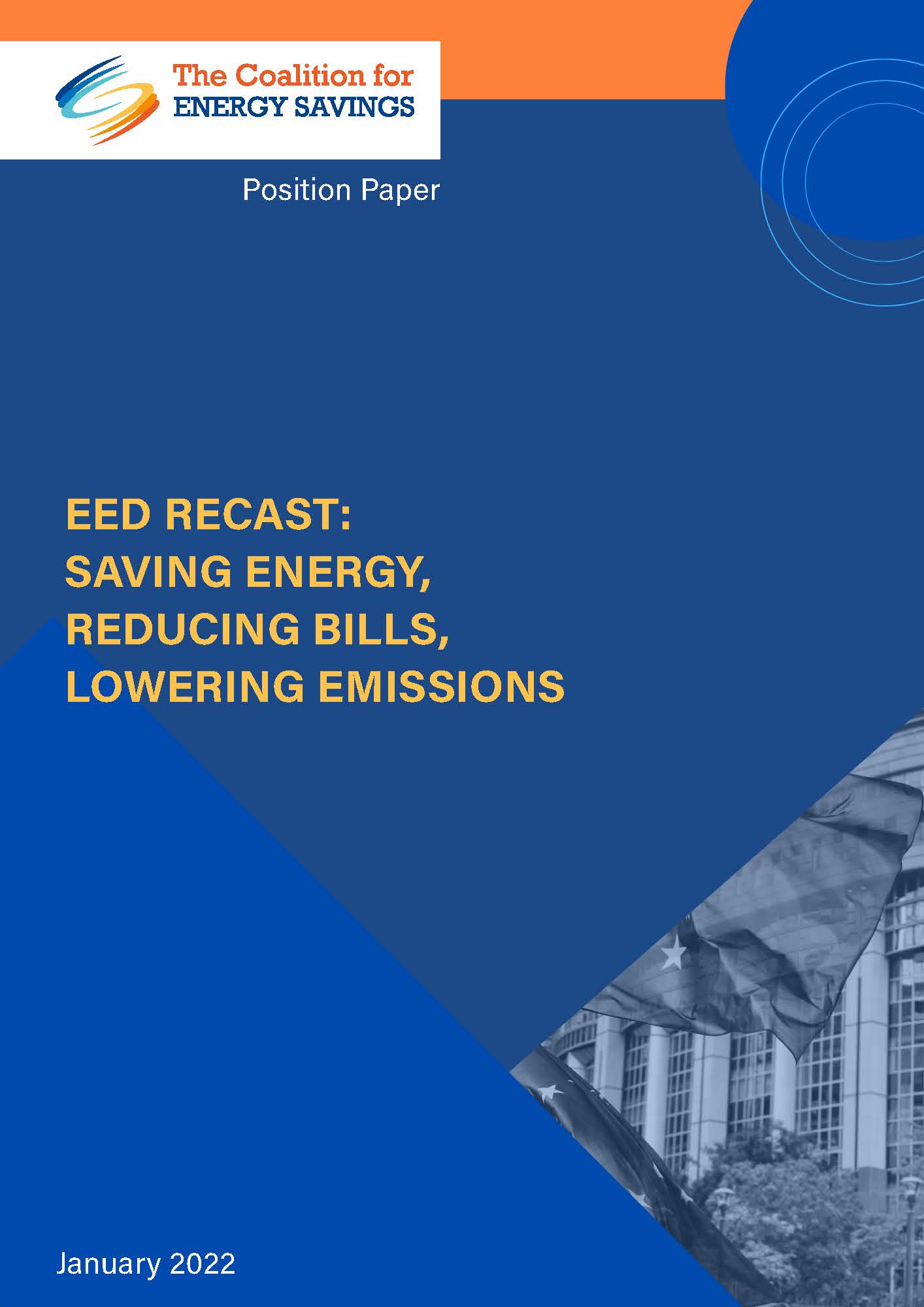EED recast: Saving energy, reducing bills, lowering emissions

The recast of the Energy Efficiency Directive (EED) is the opportunity to put in place a robust enabling regulatory framework to speed the delivery of energy savings and unlock their multiple benefits by giving predictability to investors and addressing the non-market barriers to energy efficiency.
The Commission’s proposal to recast the EED is a solid basis to speed up the uptake of energy savings in Europe. However, more is technically achievable, economically possible, and desirable for the whole European society. The EED must enable a paradigm shift on how the EU consumes energy in line with its climate neutrality objective. This paper aims at providing the Coalition for Energy Savings’ input on how to make this possible.
RELATED ARTICLES
Coalition priorities for the next EU institutions: Energy Savings, the foundation of a clean, affordable and secure EU.
The last years have shown that to mitigate climate change, improve EU energy independence and make the transition more socially inclusive and affordable for citizens, businesses and cooperatives, saving energy must be accelerated and prioritised. The new EU...
EPBD recast: Grasping the full energy savings potential of Europe’s buildings
Following the publication of the Commission’s proposal to recast the Energy Performance of Buildings Directive, the Coalition for Energy Savings published a position paper outlining its views on how to provide an ambitious revision of the EPBD to ensure the building...
A strong EED to reach climate goals and trigger a sustainable economic recovery
The new EU climate target for 2030 and the 2050 climate neutrality objective requires a strengthening of the whole European climate and energy legal framework. In that effort, reducing the EU’s overall energy consumption is essential as to enable the multiple benefits...
